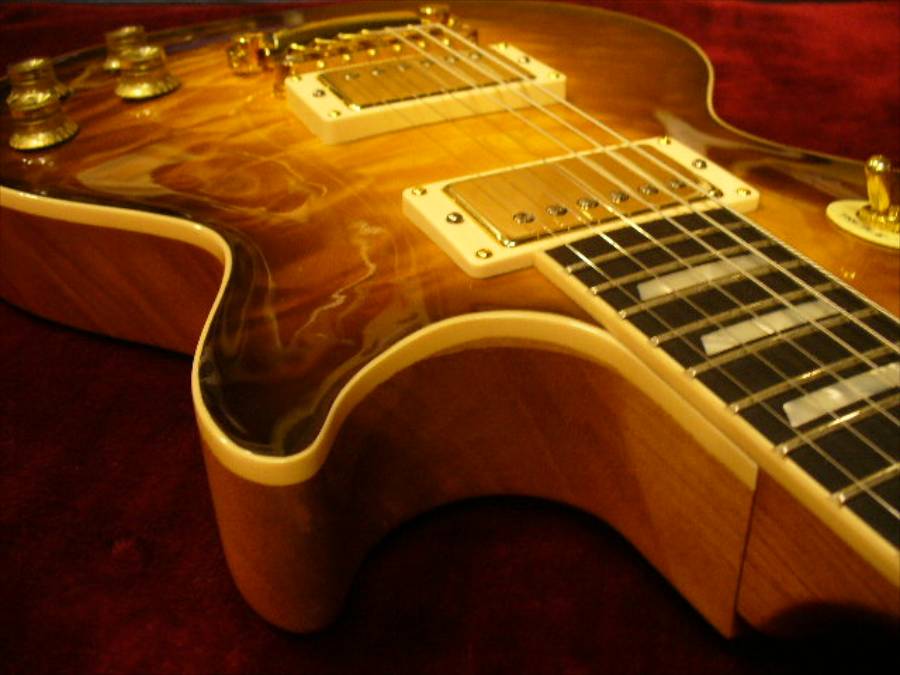
Here’s how it’s done! This is just an excellent video on how to get the guitar binding bright clean and perfect..
Here are some links to sites that we find may be very useful for your builds.

Here’s how it’s done! This is just an excellent video on how to get the guitar binding bright clean and perfect..
This is a copy of an email Brian Majeski, Music Trades Magazine, sent me. It is great and has me scratching my head.
Why Are The Feds Gunning For Gibson, And Is This Any Way To Stimulate The Economy?
THE SIXTH AMENDMENT to the U.S. Constitution declares that “the accused shall enjoy the right to a speedy and public trial,” and must be “informed of the nature and cause of the accusation.” Based on their conduct in raiding the Gibson Guitar Company, agents from the FBI and the Fish and Wildlife Service could stand a refresher course in the law of the land. In November 2009, Fish and Wildlife agents, accompanied by a heavily armed FBI SWAT team, stormed Gibson’s Nashville plant and confiscated ebony fingerboards that had been imported from Madagascar. On August 24, 2011 the Feds gave an encore, rushing into Gibson factories in Memphis and Nashville with weapons drawn to confiscate ebony and rosewood from India. The urgency of this “shock and awe” display of enforcement power would suggest a serious crime had been committed. Yet nearly two years after the first raid, no formal charges have been filed, leaving Gibson management to ponder what exactly they stand accused of.
Continue reading Great Article On The Crazy Interpretation of The Lacey Act At Gibson Guitars
There is a Maker Faire in Vancouver this weekend. It is hailed as:
The ultimate DIY festival – It’s county fair meets science fair meets farmers market meets burning man for families!
My son and I are just about to go. I will let you know what we have seen.
The video that follows is from the MAKER FAIRE Vancouver website and it Dale Dougherty talking about us all having the ability to be makers, creators. It cracks me up what folks with imagination can get up and do, the is a fellow who makes scooter powered by a drill. He wanted to see if it could be done. There is a wonderful sense of accomplishment when you start out with an idea and end up with something having a physical presence
Worth the watch:
[ted id=1065 lang=eng]
What’s The Best Fender Guitar Neck Profile For You? Here is a great run down on the Fender Guitar Neck Profiles
C-shaped neck profile. The most common modern neck profile. C-shaped necks have a comfortable oval profile that works well for most playing styles. Usually not as deep as most U- and V-shaped neck profiles. Many Fender guitars, especially Stratocasters, now have a “modern C shape” (or “flat oval”) neck profile, a flattened variation of the traditional C shape.The term “neck profile” refers to the shape of the back of a guitar neck in cross section and is often used interchangeably with the term “back shape.” It’s also referred to simply as “neck shape,” although there are other important neck measurements with which “neck profile” shouldn’t be confused (i.e., neck width, neck depth and fingerboard radius).
Fine, but what does all this technical talk mean to the average guitar player who just wants to know what time it is rather than how to build a clock? What does it mean when you’re considering buying a Fender guitar with a description that mentions the instrument’s neck profile?
Before delving into the details, it’s important to understand that neck profile doesn’t affect the sound of the guitar itself; it affects the way you play it. There isn’t one shape that’s objectively better than another when it comes to soloing or chording or doing jazz licks or scissor kicks or whatever. It’s purely a matter of personal preference and playing comfort—originally instituted at the request of players who simply had their own individual preferences.
OK, now the details. Fender uses the letters C, U and V to designate its neck profiles, along with numerous variations of each. The actual shape of these letters roughly corresponds to the shape of the back the neck in cross section, and each may have varying depths—different thicknesses from the front of the neck to the back, resulting in terms such as “thick C shape” and “deep U shape,” etc.
There are also further subdivisions of each type, usually denoted by a design year or era (i.e., ’50s V shape, ’61 C shape, ’70s C shape), in which subtle period-specific variations in one of the basic neck profiles is recreated precisely.
There is occasional confusion about C, U and V neck profile designations and A, B, C and D neck width designations. From the early ’60s to the early ’70s, Fender referred specifically to the nut width of its instrument necks using the letters A (1 ½”), B (1 5/8″), C (1 ¾”) and D (1 7/8″). These letters were stamped on the butt-end of the necks and had nothing to do with neck profile.

Thanks!
Precision Guitar Kits